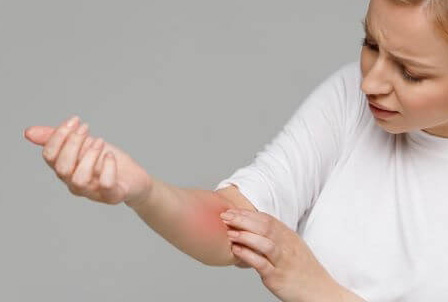What is cellulitis? - Dr Yeung Ho Hong 楊浩康 醫生

Cellulitis: Clinical Manifestations, Diagnosis, and Treatment Strategies
Cellulitis (蜂窩組織炎) is a common bacterial skin infection primarily affecting the lower dermis and subcutaneous tissue. It is most often caused by Streptococcus pyogenes (化膿性鏈球菌), accounting for about two-thirds of cases, and Staphylococcus aureus (金黃色葡萄球菌), accounting for roughly one-third. Though an acute inflammatory condition, it is generally not contagious as it involves deeper skin layers, making transmission via direct skin contact unlikely.
Cellulitis can occur anywhere on the body but most commonly affects the limbs, typically unilaterally. Early symptoms include general malaise, mild fever, chills, and rigors. As the condition progresses, localized skin becomes painful, red, and significantly swollen, potentially accompanied by blisters, erosions, ulcers, or abscess formation. Some cases may present purpura or hemorrhagic bullae. Progression may lead to spread, causing lymphangitis and lymphadenopathy, marked by red streaks along lymphatic vessels, indicating a potentially severe condition.
Diagnosis relies primarily on clinical presentation and physical examination. Some patients may undergo blood tests or imaging to rule out pneumonia, deep abscesses, or similar conditions. Notably, those prone to cellulitis include immunocompromised individuals, diabetics, and people with skin injuries or insect bites, which compromise the skin barrier, allowing bacteria to invade and spread rapidly.
For mild cellulitis, treatment typically involves oral antibiotics for 5 to 10 days, though some patients may require prolonged use until all signs of infection resolve, occasionally spanning months. Severe cases or those with systemic symptoms necessitate hospitalization and intravenous antibiotics, such as 'amoxicillin-clavulanic acid' (阿莫西林-克拉維酸), 'cephalosporin' (頭孢菌素), or 'vancomycin' (萬古黴素), selected based on local prevalent bacteria and resistance patterns, adjusted per culture results. Adjunctive measures like cold compresses, rest, and keeping the affected area clean and dry aid symptom relief and recovery.
Prevention hinges on good personal and environmental hygiene. Patients should avoid contact with potentially contaminated items like shared towels, clothing, or bedding. In mild cases, regular wound cleaning and keeping skin dry reduce secondary infection risk. For those with chronic illnesses or weakened immunity, avoiding skin trauma and promptly treating minor cuts or abrasions can prevent cellulitis onset.
In a clinical case, a middle-aged diabetic patient with untreated leg skin damage developed rapidly spreading cellulitis, presenting with high fever, chills, and lymphadenopathy. Timely hospitalization, intravenous antibiotics, and local care controlled the condition, leading to recovery. This case underscores the importance of early detection and treatment in preventing complications.
In summary, cellulitis (蜂窩組織炎) is a common, potentially serious bacterial skin infection. With prompt diagnosis, appropriate antibiotic therapy, and comprehensive care, most patients recover effectively. Enhanced personal hygiene, skin protection, and timely medical attention are key to preventing progression and complications.
